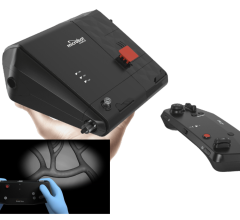There were 15 abstracts presented describing radial access and intervention during the American College of Cardiology (ACC) and i2 Summit meeting in April in New Orleans. The scientific work was submitted from all over the world - Canada, South Korea, Australia, the former Yugoslav republic of Macedonia, the United States, Italy and Japan. The abstracts focused on some of the most burning issues in current radial research.
Hibbert et al. from Ottawa, Canada nicely demonstrated that morbidly obese patients (BMI ? 40) had fewer bleeding and access site complications compared to femoral approach. Similarly, Jacobs et al. from the University of Miami elegantly demonstrated that in the very challenging patients with end-stage liver disease and associated coagulopathy and thrombocytopenia radial was a feasible and safe.
Unprotected left main is the specialty of the South Korean investigators. Youn and colleagues reported that crossover to femoral from radial was more likely to occur due to underlying coronary anatomical considerations, rather than patients’ clinical disease.
The group from Wake Forest University showed that failed radial access increases cardiac catheterization laboratory utilization and that in patients with failed radial access, bleeding rates do not substantially differ from femoral access.
The very nicely named Italian “Paprica” trial investigators demonstrated lower rates of short-term mortality with radial access, primarily due to reduction in major bleeding. A Japanese group from tsunami-affected city of Miyagi described very convincingly the safety and efficacy of a 7.5 French sheathless system for complex PCI with a somewhat difficult-to-reconcile zero percent radial occlusion rate. These findings are important, as they demonstrate that large equipment can safely be used with radial approach, particularly if performed in the overall smaller body habitus Japanese population.
Several abstracts tackled the predictors of procedural difficulty in obtaining radial access (newly described in this abstract - Hispanic origin). Sandeep Nathan, M.D., MS, from the University of Chicago, reported very high rates of radial atherosclerosis in a single center (32 percent). Whether transradial PCI is appropriate for STEMI was confirmed by Rha et al. from Seoul – they observed lower in-hospital and six-month cardiac death with transradial PCI when compared to femoral access. The group from Skopje in the former Yugoslav republic of Macedonia reported a non-randomized series of nearly 1,700 ST-elevated myocardial infarction (STEMI) patients treated with femoral (60 percent) and radial access (40 percent). Likely due to selection bias, the transfemoral group had higher mortality and more patients presented with cardiogenic shock. Nonetheless, procedural times were similar with lower access site complications with radial approach. Similarly, Malaipan from Melbourne, Australia, reported that recommended door-to-balloon (D2B) times are achievable with utilization of radial approach in STEMI.
In summary, it is clear that transradial PCI is a global phenomenon. Great minds think alike and it is very encouraging to observe parallel progress in this field on almost all the continents.


 January 14, 2025
January 14, 2025 







